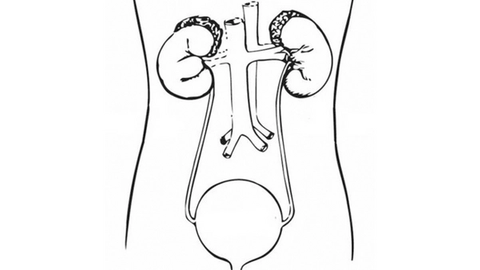Prostate cancer under the microscope: © heitipaves – stock.adobe.com
A large-scale, randomized, phase 3 trial, part of the STAMPEDE (NCT00268476) platform, has found that adding metformin to standard-of-care treatment in nondiabetic patients with metastatic hormone-sensitive prostate cancer (mHSPC) did not significantly improve overall survival (OS).1
While the widely used antidiabetic agent did reduce adverse metabolic effects associated with androgen-deprivation therapy (ADT), its primary end point of improved OS was not met in the overall study population.
These findings provide crucial evidence regarding the utility of metformin in this patient cohort, particularly given previous preclinical data and smaller studies suggesting potential anticancer activity.
Study Design and Patient Cohort
The STAMPEDE trial, conducted across 112 hospitals in the United Kingdom and Switzerland, recruited patients with high-risk locally advanced or metastatic adenocarcinoma of the prostate.1,2 This specific analysis focused on nondiabetic patients with metastatic disease, adequate renal function, and a WHO performance status of 0 to 2. Patients were randomized 1:1 to receive either standard of care or standard of care plus metformin 850 mg twice daily. Standard of care typically included ADT, with or without radiotherapy, and with or without docetaxel or an androgen receptor pathway inhibitor (ARPI) such as abiraterone (Zytiga), enzalutamide (Xtandi), or apalutamide (Erleada).
Between September 5, 2016, and March 31, 2023, a total of 1874 patients with metastatic disease were randomized.1 The median age was 69 years, and the median prostate-specific antigen (PSA) level at baseline was 84 ng/mL. A substantial majority of patients (94%) had newly diagnosed metastatic disease, and 82% received ADT plus docetaxel.
No Overall Survival Benefit Observed
The primary end point was OS. After a median follow-up of 60 months, 473 deaths were reported in the standard-of-care group, with a median survival of 61.8 months. In the metformin group, 453 deaths were reported, with a median survival of 67.4 months. The hazard ratio (HR) for OS for the metformin group compared with standard of care was 0.91 (95% CI, 0.80–1.03; P =.15), indicating no statistically significant improvement in overall survival with the addition of metformin.
Similarly, there was no evidence of an effect on prostate cancer-specific survival in the overall population (HR, 0.97; 95% CI, 0.85–1.12; P =.70). Progression-free survival (PFS) and failure-free survival also showed no significant overall benefit.
Potential Benefit in High-Volume Disease
While the overall population did not demonstrate a survival benefit, a prespecified subgroup analysis explored the impact of metformin based on metastatic disease volume, categorized by CHAARTED criteria. In patients with high-volume disease, the HR for OS was 0.79 (95% CI, 0.67–0.94; P =.0072) favoring metformin. Conversely, for patients with low-volume disease, the HR was 0.98 (range, 0.78–1.23; P =.87). Although the P-value for interaction was 0.12, which did not meet strict statistical significance for heterogeneity, this finding warrants further investigation into whether a subset of patients with more aggressive disease might derive some oncological benefit. A similar trend was observed for PFS and metastatic PFS in the high-volume disease subgroup.
Mitigating Metabolic Adverse Effects of ADT
A significant secondary finding of the study was metformin’s ability to mitigate the adverse metabolic effects commonly associated with ADT. Patients in the metformin group experienced significantly less weight gain compared with the standard-of-care group. At 104 weeks, patients on standard of care gained a mean of 4.40 kg, while those on metformin gained a mean of 2.00 kg (mean difference, –2.48 kg; 95% CI, –3.55 to –1.41; P <.0001).
Metformin also led to statistically significant improvements in changes from baseline for fasting glucose, total cholesterol, LDL cholesterol, and HbA1c. These metabolic benefits were consistent across various time points (24, 48, and 104 weeks).
Safety Profile
PC-3 human prostate cancer cells: © heitipaves – stock.adobe.com

The safety profile of metformin was consistent with its known effects. Grade 3 or worse adverse events were reported in 57% of patients in the metformin group compared with 52% in the standard of care group. The most notable difference was in gastrointestinal adverse events, which were more common with metformin. Diarrhea was reported by 65% of patients in the metformin group vs 37% in the standard-of-care group, with grade 3 diarrhea occurring in 5% and 3% of patients, respectively. Nausea was also more frequent in the metformin arm. Other body systems showed no significant differences in grade 3 or worse adverse events. There was 1 drug-related death in the metformin group compared with 6 in the standard-of-care group.
Implications for Clinical Practice
The results of the STAMPEDE trial, the first large-scale randomized study of its kind in this population, do not support the routine addition of metformin to the standard of care for all nondiabetic patients with mHSPC for the purpose of improving OS. However, the observed metabolic benefits are noteworthy, as ADT-induced metabolic changes, including weight gain and increased cardiovascular risk, are significant concerns for patients.
“[The] addition of metformin to standard of care produced clear metabolic benefits irrespective of disease volume, inducing significant and sustained reductions in circulating glucose and HbA1c and total cholesterol and LDL cholesterol concentrations,” study authors wrote. “Additionally, metformin significantly reduced clinically relevant weight gain induced by systemic treatment with ADT. These findings are novel and represent a substantial and potentially valuable treatment benefit for men with this lethal form of prostate cancer. Use of metformin as a supplement to ADT-based standard of care will have to be weighted against side effects, namely [diarrhea].”
The intriguing signal of potential anticancer effect in patients with high-volume disease warrants further exploration. This may suggest that a more tailored approach, perhaps based on disease characteristics or specific biomarkers, could identify a subset of patients who might benefit from metformin beyond its metabolic effects. Ongoing research stemming from the STAMPEDE platform, including a metabolic substudy, aims to delve deeper into these mechanisms and identify optimal patient selection.
